Even after the last bell chimes, schools seem to be constantly pulsing with activity — games, practices, performances, and other activities transform them into community hubs.
Some Idaho schools have especially embraced that role, and are offering even more services — ranging from healthcare to food security to English classes — to students, families, and community members.
Their philosophy: Students are more likely to succeed when their basic needs — and those of their families — are met. So these schools (dubbed community schools) are teaming up with local and statewide partners to make that happen.
Idaho’s first four community schools sprouted up in Boise in 2016. Today, there are 35 community schools across the state.
In this week’s Spelling It Out feature, we define nine different types of schools.
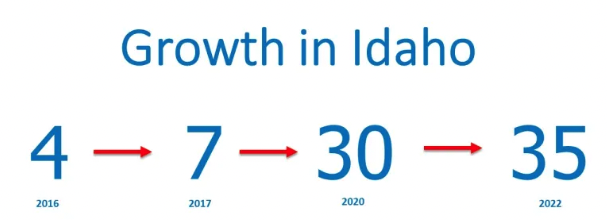
Hayley Regan, the collaboration manager for United Way of Treasure Valley, defined community schools as “a place where the school invites in the community to work together to make sure every child has what they need to be successful.” United Way and the State Department of Education were the original drivers behind Idaho’s community school efforts, which have expanded to include more statewide partners and funders.
The community schools approach is based on a national model, but Idaho’s program has gained attention for its unique aspects — like the way community school coordinators from across the state meet up online to share successes and brainstorm solutions for overcoming roadblocks.
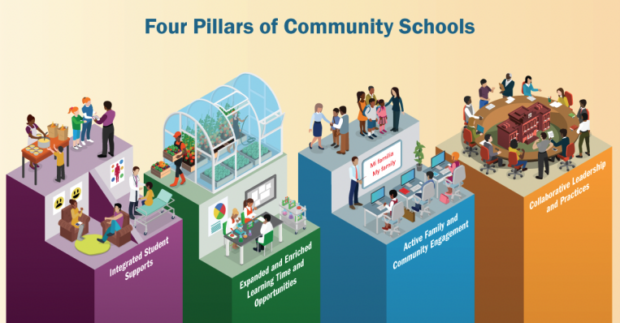
Within the state, each community school is tailored to its unique community’s needs. Taking a look at one southeast Idaho school district’s approach provides a glimpse into what a community school might entail.
American Falls wants to boost families out of poverty and into brighter futures
In the American Falls School District, where about 68% of students qualify for free lunch, the focus is on helping people move out of poverty.
“We want to help out students in poverty, and the best way to help them is to help their families,” said Superintendent Randy Jensen.
Jensen has dedicated a building formerly used for fourth graders to its community school efforts. It’s become a hub of sorts where community members can gather for a host of services:
- The Idaho Department of Labor provides resume, job training, and employment application opportunities.
- Idaho State University provides English as a Second Language and GED classes.
- The Pocatello Free Clinic provides medical care (last week construction crews were laying out plans to transform a former classroom into a medical office).
- Idaho State University’s dental hygiene program provides dental care.
- NeighborWorks Pocatello helps families repair their homes and access affordable housing.
“Our goal is to have these in one location, so people can come to one place to get a multitude of help,” Jensen said. “Our parents in poverty needed us to help them meet their basic needs … and get through crises so they can have a more stable life and be more engaged in their kids’ education.”
Another key component of American Falls’ strategy is its “Read, Talk, Play Everyday” initiative — which is exactly what it sounds like. The program’s aim is to get parents doing all three with their kids 365 days a year. As part of its efforts, the district offers a family engagement night once a month, each with a different theme, that aims to bring families together at schools.
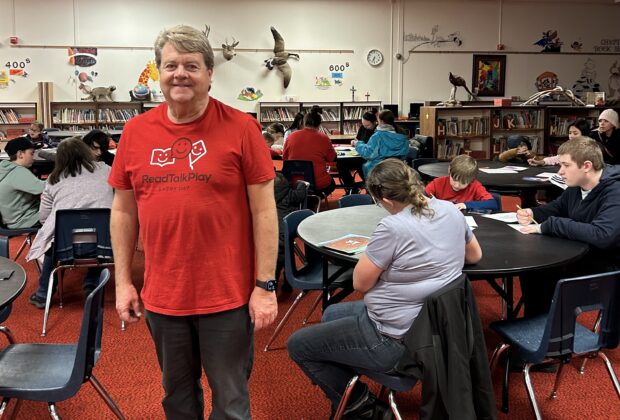
Last Thursday night, the parking lot at American Falls’ Hillcrest Elementary was packed. Families were streaming into the school for its monthly family engagement night.
The theme this time (there’s a different one each month) was “create.” Seven stations were set up in different classrooms, offering activities like dancing, painting, and acting.
At the end of the night, the approximately 100 families that attended took home cook books, bags of food, and crafting kits.
The “Read, Talk, Play Everyday” initiative was the district’s brainchild, but has since spread to other districts around the state.
GED and ESL classes open doors to better lives
Even a typical Tuesday morning in American Falls presents opportunities for community members.
At the local community school hub, they can take classes to earn their G.E.D. or learn English.
Blanca Mendez, an instruction assistant with Idaho State University’s College and Career Readiness program, teaches the courses and speaks proudly of how her students have gone on to earn American citizenship or enroll in college courses.
And she knows firsthand the value of the education she provides.
Mendez immigrated from Mexico to American Falls in 1992 and learned to speak English at school. Later on, she married young and didn’t finish high school. Not getting her diploma led her to a lifestyle she didn’t want to live.
“I was hauling beets and sorting potatoes and driving truck. And I remember going out into the fields and having one of my kids on my back and one on my front and saying ‘Oh my gosh, I can’t do this all my life,’” she said.
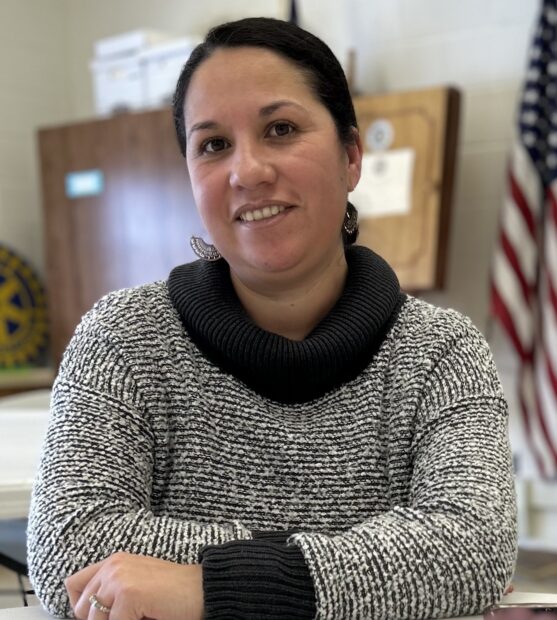
So, she decided to get her GED. She used her own money to buy books, taught herself the content, and eventually earned the credential. For her, it was monumental.
“When I got my GED – really, honestly, from the bottom of my heart — it changed my life,” she said. “If I had not gone through that I probably wouldn’t be in this program working here.”
Today, Mendez makes it easier for others to follow the same path — learning English and earning a GED — but for them, books and instruction are provided.
“This is a big opportunity to have this program locally,” she said. “I know that our students are very grateful because they tell us over and over how this has affected them … It’s a game changer.”
Last Tuesday, the DOL had set up shop in the classroom next to Mendez. An employee was there ready to help community members find gainful employment.
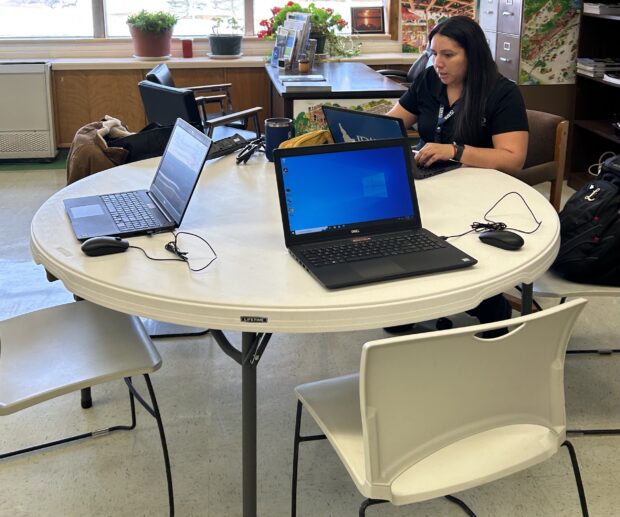
“Good jobs have a very real impact on an individual’s — and therefore their family’s — life,” said Jani Revier, director of the Idaho DOL. “Without a good job, you’re not going to have the funds to pay for housing, shelter – all of the basic needs.”
And when basic needs are met, students and families are better positioned to focus on school.
More schools are following American Falls and others’ lead and adopting the community schools approach — with the help of financial donors.
Startup funds get community schools off the ground and offer new solutions to persistent problems
As more Idaho schools look to adopt a community schools approach, they’re seeking out grants to help them get started.
The Idaho Coalition for Community Schools is a group of partners committed to promoting the strategy throughout Idaho. United Way acts as the “backbone” and head organizer for the group, which includes a number of funders, including the Blue Cross of Idaho Foundation.
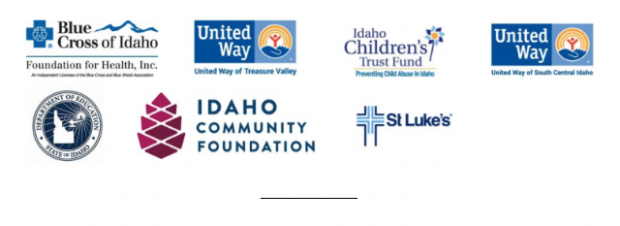
“Aside from family, where do we have the ability to make a positive impact with students? It’s at school,” said Jackie Yarbrough, the foundation’s senior program officer.
The funders support community schools in many ways, including offering start-up funds for the first few years (usually for a community schools coordinator to direct the program). After that, the idea is districts will assume the costs after piloting the program and seeing its value.
Sometimes entire districts adopt the approach, and sometimes it’s just a school within a district.
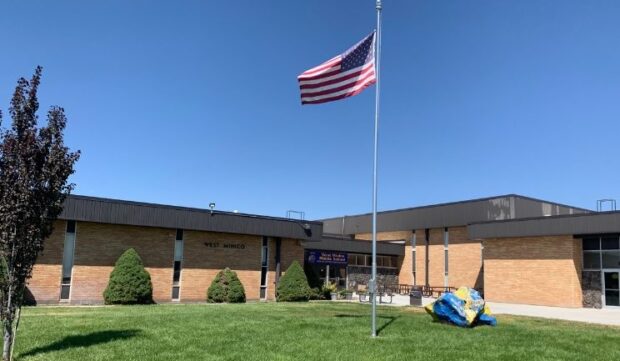
West Minico Middle School is one of those that is getting its community schools program off the ground this year.
“It sounded like a great opportunity to try and help kids … who have the cards stacked against them,” said Brittany Rigby, a counselor at the school. “Continuing to try and do the same thing that we’ve done in the past wasn’t going to get us a different result, so I felt like trying to do something a little bit different.”
With more than 500 students to help, Rigby was feeling overwhelmed.
“There are days when it feels like it’s impossible to meet the needs of all the kids because there’s just not enough hours in the day,” she said. “When a student is so focused on so many outside things like basic necessities then learning becomes secondary.”
She applied for and received a $10,000 grant to get the program started and hire a community school coordinator, Lacey Rich.
Rich’s first projects: addressing food insecurity and counseling needs for kids and community members. She’s developing partnerships to make both happen. She’s also looking into bringing GED and ESL classes to the campus.
“I’ve had a lot of parents comment that they’re really glad that we’re trying to do something like this,” Rigby said. “They can see that there’s a lot of benefit there and they hope that we keep going with it.”
“Everybody goes through tough times.” Community schools are here to help.
Florina Ruvio, a parent to current and past students at Caldwell’s Sacajawea Elementary School, is a vocal supporter of its community school approach.
Her nephew started attending the school after he lost his father, and the school’s free, onsite counseling services made a big difference to him.
“It was absolutely a godsend,” she said.
“A lot of times when families are struggling, there’s a sense of shame, and I think (this school model) helps remove that stigma and show that it’s okay to need help. Everybody goes through tough times.” — Florina Ruvio, parent, Sacajawea Elementary School
Ruvio raves about the school’s other offerings as well — whether it’s mental healthcare, dental cleanings, free books from the library, or events like a Trunk or Treat.
“A lot of times when families are struggling, there’s a sense of shame, and I think (this school model) helps remove that stigma and show that it’s okay to need help,” she said. “Everybody goes through tough times.”
Sacajawea was already a great school before it became a community school, but now it “feels like the hub of the community.”
“It makes it so accessible for parents to not only take part in school, but it also helps manage family stress … by helping with food or offering after-school activities,” Ruvio said. “It’s starting to spread throughout the community that Sacajawea is the place to go.”
